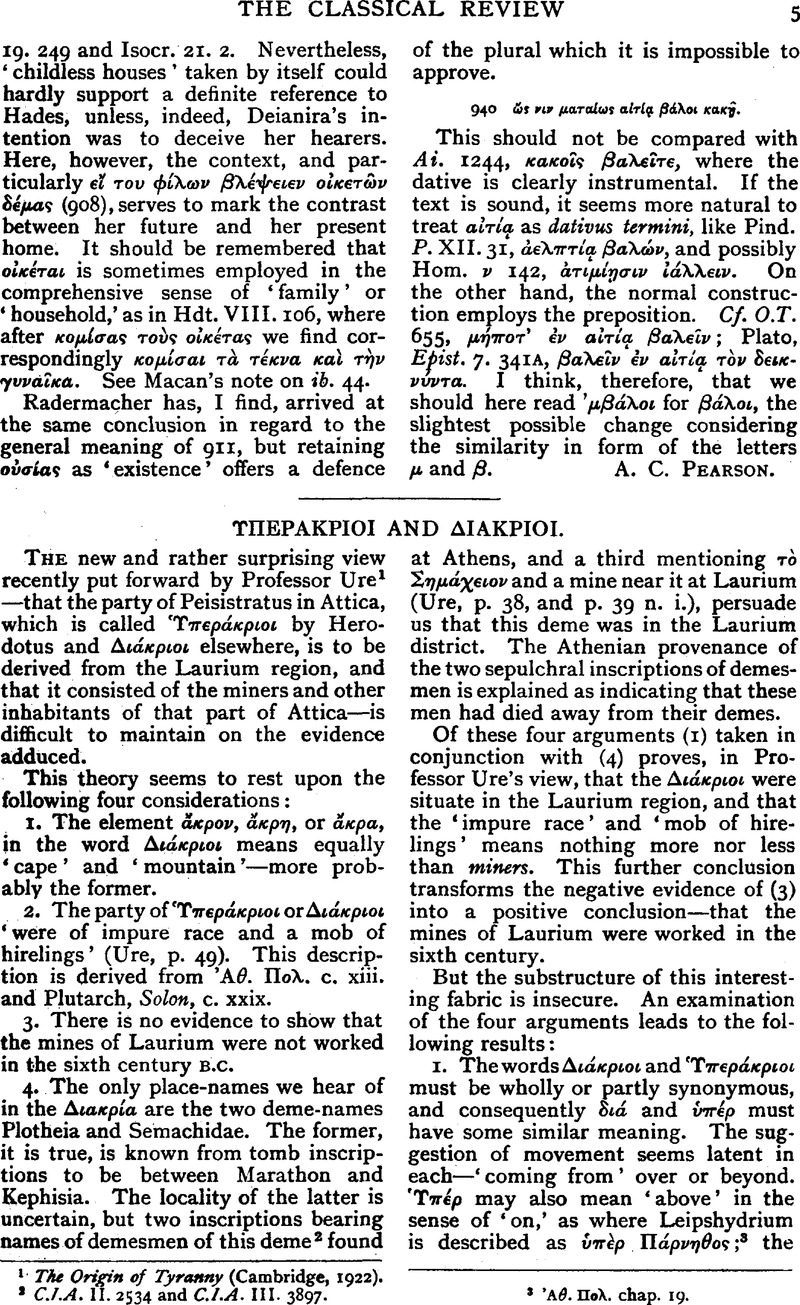No CrossRef data available.
Article contents
Abstract

- Type
- Review Article
- Information
- Copyright
- Copyright © The Classical Association 1925
References
page 5 note 1 The Origin of Tyranny (Cambridge, 1922).Google Scholar
page 5 note 2 C.I.A. II. 2534 and C.I.A. III. 3897.
page 5 note 3 'Aθ. Πολ. chap. 19.
page 6 note 1 Thuc. iv. 25 (with Krüger).
page 6 note 2 Year's Work, 1920, p. 93. The settlement is early, but it shows that the Sikels were hill folk.
page 6 note 3 Thuc. i. 16.
page 6 note 4 C.I.A. I. 257–258.
page 6 note 5 C.I.A. I. 263.
page 6 note 6 C.I.A. I. 257–258.
page 6 note 7 C.I.A. I. 262 (or έν Λίνδφ).
page 6 note 8 His interpretation of the mine at Philippi called ῎Aσυλον as being an ‘asylum’ for similar scallywags (op. cit. p. 50) is precarious. ῎Aσυλον more probably preserves a local place-name, of which traces are seen in the neighbouring Σνλέoς φεδίoν of Herodotus (VII. 115) and in the famous Σκαφγ⋯ ὔλν gold mine. In the latter case there is good MSS. authority for the reading έν Σκαφτησνλη, and Steph. Byz. gives the form Σκαφτησνλη with the ethnic Σκαφτησνλίται.




